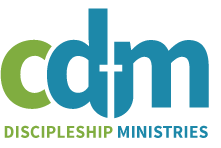![]() Though Lost In the Middle, Midlife and the Grace of God deals with that nebulous idea of midlife crisis, whenever that might occur, it has a powerfully challenging message. Though I have moved beyond that general time frame of when we often think midlife occurs and though I understand that according to U. S. demographics old age begins at 81, I found the book helpful and challenging to me personally. The topics dealt with are applicable to Christians of any age. Though Moses prayed, “teach us to number our days…” none of us know when that once appointed time to die will be – we need to have certain things in place in order to live God-honoring healthy lives today.
Though Lost In the Middle, Midlife and the Grace of God deals with that nebulous idea of midlife crisis, whenever that might occur, it has a powerfully challenging message. Though I have moved beyond that general time frame of when we often think midlife occurs and though I understand that according to U. S. demographics old age begins at 81, I found the book helpful and challenging to me personally. The topics dealt with are applicable to Christians of any age. Though Moses prayed, “teach us to number our days…” none of us know when that once appointed time to die will be – we need to have certain things in place in order to live God-honoring healthy lives today.
Tripp demonstrates solid biblical and theological perspectives plus definite understanding of human behavior. One of the main points of interest was his emphasis on latent idolatry and how it surfaces in what is often referred to as midlife. Often times the regret, disappointment, unfulfilled dreams and discouragements of past and missed opportunities pull us down. In reality, upon close examination, some of those things have become those latent idols that should not have been there in the first place.
I participated in a class of forty adults using the book as its study and found the input, response, and interaction to be most enlightening. And of course Tripp wants individuals to deal with the hurts, disappointments, and pains in a manner that enables them to discover God’s wonderful grace in the process. Tripp also reminds us that it is often difficult when we are going through certain situations to be able to make sense out of it. However, those can be hopeful times when we discover more fully God’s plan and will for our lives.
Tripp writes, “The Bible never discusses midlife, just like it never discusses teenagers. Yet, the Bible is able to unpack any of life’s experiences because it is written by the One who made them all.” One characteristic God has put in his children’s lives is hope, and hope often comes in a moment of crisis when we discover his grace.
Tripp’s overall thesis is while the Bible never tells us about midlife crisis, the Bible tells us everything we need to know about midlife crisis. Isn’t that just like our God? He knows our needs and is never caught unaware or unprepared to minister to us. In a highly readable style, Tripp closes with these words, “The notes of disappointment, regret, weakness, decay, defeat, restoration, reconciliation, and sight are not parts of another song. They are each a part of God’s symphony of grace and redemption.” God does love us and has a plan for our lives and in that we have encouragement, hope, and confidence that his grace is sufficient for our every need.
I have recommended this to people struggling with some of these things. I have also encouraged a couple of men’s groups to study this book and the mixed adult class mentioned about is another possibility for some fruitful study and exchange using Lost in the Middle as the point of reference.

 In a training session with children’s ministry leaders, a somewhat inclusive question came to us regarding infant baptism, election, covenant and evangelism. Volumes have been written on each of these, but we can only make a short response here. If you read through the PCA Book of Church Order, especially those parts listed below, you will find infant baptism, election, covenant and evangelism are all connected.
In a training session with children’s ministry leaders, a somewhat inclusive question came to us regarding infant baptism, election, covenant and evangelism. Volumes have been written on each of these, but we can only make a short response here. If you read through the PCA Book of Church Order, especially those parts listed below, you will find infant baptism, election, covenant and evangelism are all connected.